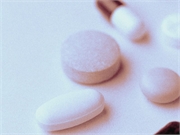Authors call for increased awareness of need for treatment with secondary preventive medications
MONDAY, May 18, 2020 (HealthDay News) — Uptake of guideline-directed preventive therapies is lower for patients with stroke and peripheral artery disease (PAD) compared with those with coronary artery disease (CAD), according to a study presented at the American Heart Association Quality of Care & Outcomes Research Scientific Sessions, held virtually from May 15 to 16.
Martin Tibuakuu, M.D., from St. Luke’s Hospital in Ballwin, Missouri, and colleagues used data from the Medical Expenditure Panel Survey (2006 to 2015) to compare patient-reported outcomes, resource utilization, and health care expenditures across the three major types of atherosclerotic cardiovascular disease (ASCVD; CAD, stroke, or PAD). Data were analyzed for a sample of 14,262 participants with one type of ASCVD, representing approximately 15.9 million U.S. adults.
The researchers found that of the participants (mean age, 65 years; 48 percent women), 59.6 percent had a diagnosis of CAD only, 37.5 percent stroke only, and 2.9 percent PAD only. Participants with stroke were more likely to report poor patient-provider communication (odds ratio, 1.37), poor health care satisfaction, and more emergency departments visits, and they were less likely to be taking a statin and aspirin compared with those with CAD. The investigators also found that compared with patients with CAD, those with PAD had higher odds of not being on aspirin (odds ratio, 3.10) or a statin (odds ratio, 2.01). PAD was associated with the highest annual total and out-of-pocket expenditures among the three conditions.
“Our results highlight a missed opportunity for secondary ASCVD prevention among patients with PAD and stroke, and the need for public health campaigns to direct equal attention to all three major ASCVDs,” the authors write.
Copyright © 2020 HealthDay. All rights reserved.








